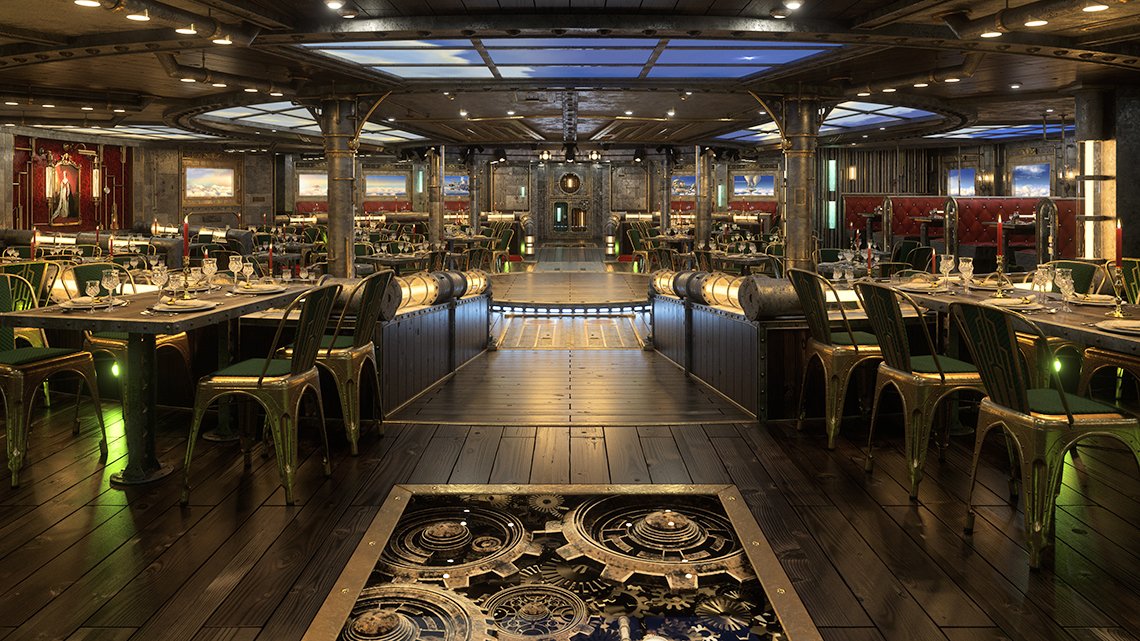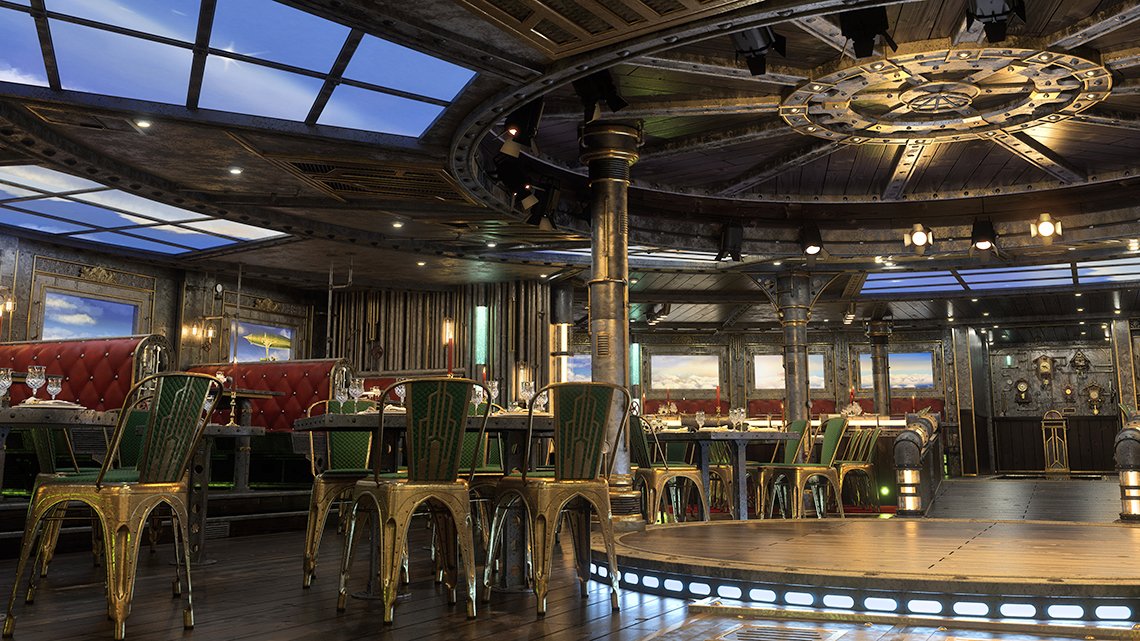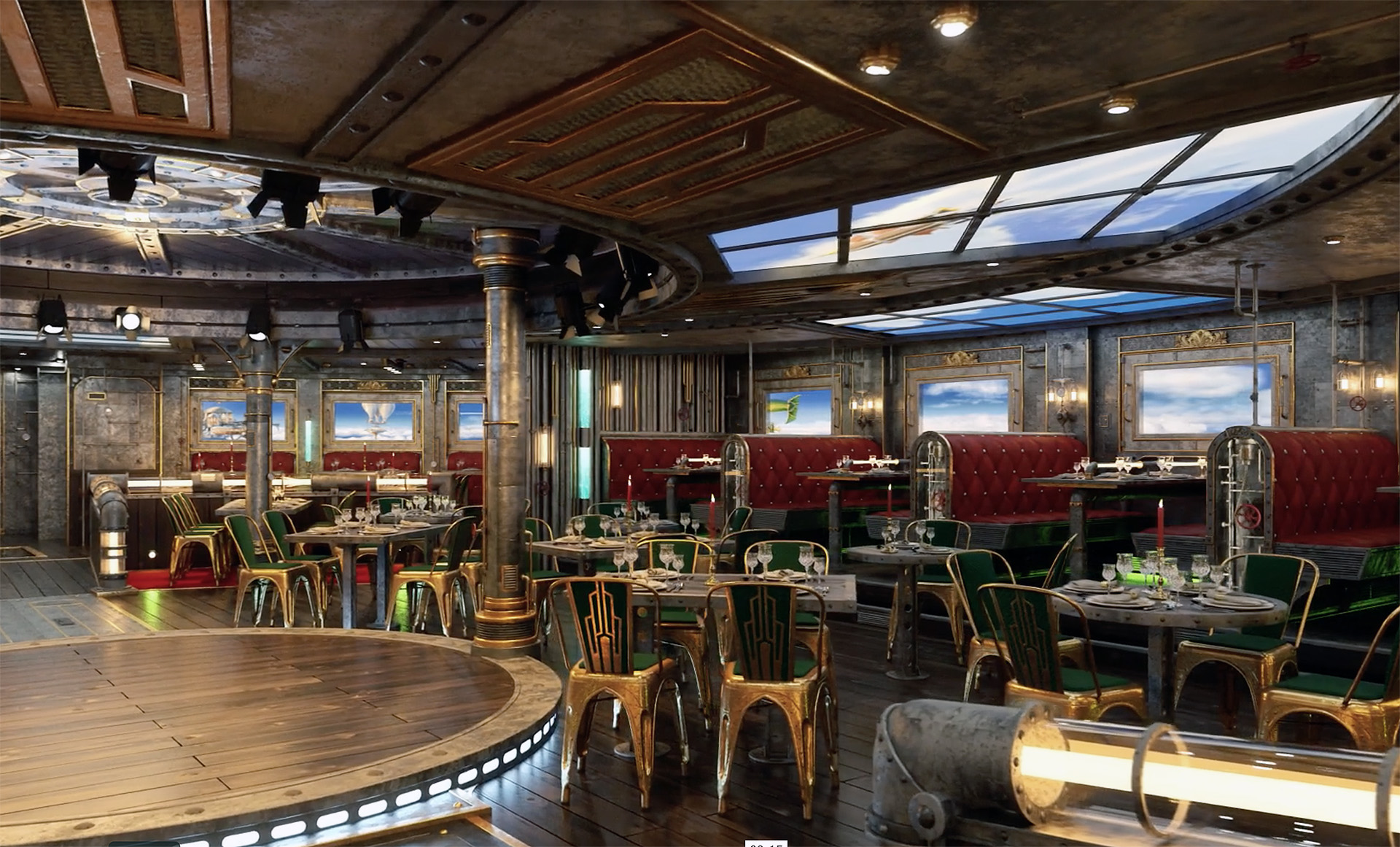Animation - Aidanova Time Machine Restaurant
This incredibly detailed animation sequence was created by Indigo veteran and freelance CGI artist Arthur Liebnau and his visualisation agency Polygon Manufaktur.
Thanks for agreeing to doing this interview with us! Please tell us a bit about the background of the project.
This visualisation shows a Steam Punk themed restaurant on the new AIDAnova cruise ship that will start its first journey in December 2018. It was realised for the architects of Partner Ship Design in Hamburg Germany, with the concept design done by Leisure Expert Group from the Netherlands. I had an amazing 101 page strong PDF file with detailed drawings and references. This mass of data allowed me to work on this project for weeks without the need to ask for further guidance from the concept team. While I worked on many projects for this client in 2017, this Steampunk Diner was by far the biggest.
Impressive materials and attention to detail, congratulations on a great work. What were your experiences working on something like this in Indigo?
Most of the content creation has been straightforward. Lighting on the other hand was rather complex, with a total of 804 emitters using 38 different emitter materials. To tweak the lighting in this scene, Indigo's light layer system was indispensable. Multiple groups of emitters have been assigned to light layers, and these I could play around and experiment with lighting. The light intensity and colour of all these groups could be tweaked in a single quick test render. This workflow felt very intuitive and achieving results has been very fast.

© Arthur Liebnau
Were there any difficulties in the project, and, if so, how did you overcome them?
To be honest the viewport performance of C4D was the biggest difficulty and a reason why I finally upgraded to a GeForce GTX 1080 Ti card. The whole scene is very geometry heavy, so soloing out areas I worked on was needed.
Regarding Indigo I had an issue in this scene with its way to allocate computing time for emitters based on their power: the brighter a light source, the more computation time is invested in calculating it. This behaviour usually works great, but in such a complex scene and with short render times needed, this can result in some light sources being noisy while others are clear very fast.
My complaints about this to the Indigo Team resulted in the new feature called "Emission Sampling Multiplier" that the devs coded into the renderer super fast and released as a beta. This new feature let the user boost or reduce the importance of an emitter. Fine-tuning my scene for the limited render time per frame was possible and the resulting animation was much less noisy at lower render times.
Why did you choose Indigo Renderer over other rendering engines for this project?
Since I've been working with Indigo for over 12 years now, it's a essential tool in my visualisation pipeline. The image quality of Indigo combined with its speed and the ability to tackle the most complex geometries have been major reasons to stick with it for so many years.
This animation was rendered on three overclocked Intel i7-4770k systems with BiDir PT at around 15 min per frame in 4K. The output was then denoised and downsampled to 1080p. The scene is made of 35K objects with a total of 201 million polygons, 804 emitters with a total of 38 different emitter materials and 151 other materials. Indigo crunched through this data without any issues and allowed some fast workflow with quick previews and great quality for the final output without adjusting and tweaking 1001 engine settings like needed in some other renderers. Thanks to this reliability I could focus on content creation and material development in this project.

© Arthur Liebnau
What features would you like to see in Indigo for future projects like this?
In this project there have been now showstoppers or major reasons not to use Indigo, but for a smoother workflow pipeline in the future, I'd like to have proper AOV output, mostly having Material IDs rendered out in layered EXR files would be nice. While Indigo is really fast, even faster render speed is always welcome if you do animations with thousands of frames. A marginal speedup can already be meaningful for the whole project. Last but not least: development of the Indigo plugins for the 3D packages helps a lot when doing animation, and is always greatly appreciated. :)
Thank you very much for taking your time to talk with us, and we hope to see more great work from you in the future!
It's been a pleasure as usual, keep up the great work on this gem of a render engine and we'll meet again.
Please feel free to visit my portfolio to see many more projects rendered in Indigo: Polygon Manufaktur.

© Arthur Liebnau

